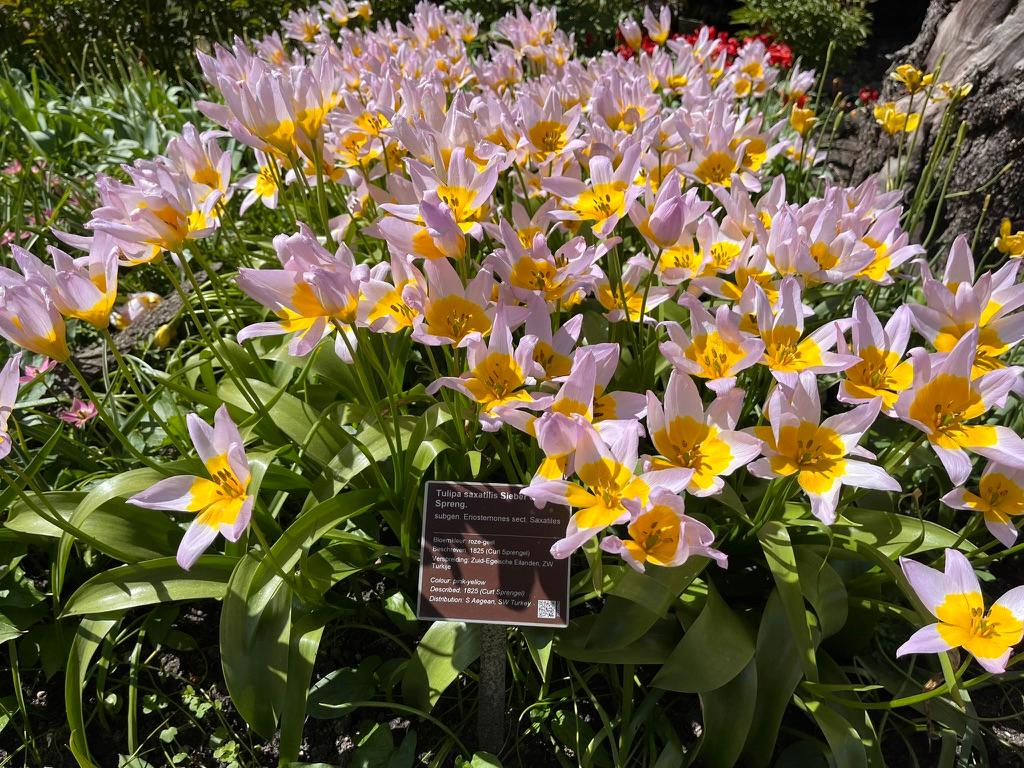The tulip craze: Origins of the tulip
Tulips were brought back to the Netherlands in the 1500s and became a backbone of the Dutch culture.

Tulips are massively popular for their spectacular and vibrant colors. The Netherlands is well known worldwide for their cultivation of tulips. It currently has 60,000 acres of land dedicated to tulips for cut flowers or cultivation of the bulbs (Photo 1). The country still produces the majority of tulips worldwide.
Where did the tulip originate?
Tulips are native to eastern Europe to northwest China and northern Africa in the Himalayan mountains. The Turkish people were the first to collect them and cultivate them. They were brought back to the Netherlands by the Dutch East India Company, a trading company that traded goods from the Netherlands with the Ottoman Empire.
Why are tulips associated with the Netherlands?
Dutch diplomats received tulips as gifts from dignitaries of the Ottoman Empire and botanist Carolus Clusius planted them in a garden in Leiden, Netherlands in 1594. The Dutch fell in love with the exotic flower, which was known as the flower of the kings.
What was tulip mania?
Tulips were so popular and rare that they became extravagantly expensive. The demand escalated and became wildly popular during the period known as tulip mania in the Netherlands from 1634-1636. The most expensive of the tulips was the tulips ‘Viceroy’ and ‘Semper Augustus’ during 1636, which had distinctive red and white streaks (Photo 1). Some tulips were as expensive as a house and more people became interested earning large profits from their trade. In 1636, the Dutch created a stock market where contracts of the future tulips, which were still in the ground, were traded up to 10 times a day. The first stock market bubble burst in 1637 and the prices for tulips bulbs plummeted.
For more, check out the “History of the Tulip” from the Amsterdam Tulip Museum.
What are the species of tulips?
There are over 100 species of wild tulips that are native to eastern Europe, western Asian and China. The species include batalinii, clusiana, linifolia, pulchella, saxatilis, sylvestris, tarda and turkestanica (Photo 3).

The Dutch still maintain a collection of tulip varieties is the Hortus Bulborum in Limmen, Netherlands, and includes 3,500 varieties. The earliest cultivated tulip in the Dutch collection is Tulipa ‘Red & Yellow’ from 1595. Today’s cultivars of tulips are often hybrids of different tulip species and have been bred to be tall, formal and in striking colors.
These hybridized varieties are generally classified into 15 groups: early season flowering (single early, double early, Kaufmanniana, Fosteriana, Greigii), mid-season flowering (Triumph, Darwin Hybrid), late season flowering (single late, Lily-flowering, fringed, Viridiflora, parrot, double late) and variable bloom time (Rembrandt and species/miscellaneous). Check out “Types of Tulips for Home Gardeners” by Iowa State University Extension.
Today, flower enthusiasts from all over the world seek out tulip fields in the Netherlands. The Bollenstreek is a region of tulip gardens and fields in the providence of south Holland. At the heart of the region is Keukenhof Gardens, a spring garden that welcomes 1.5 million visitors yearly during its eight week spring season (Photo 4).
In the area surrounding the gardens, visitors can rent bikes and follow a route between the flower fields. If you love tulips and flowers, I’d highly recommend adding this trip to your bucket list. If you are looking for a taste of the Netherlands closer to home, check out the Tulip Time Festival from May 4-12, 2024, in Holland, Michigan.



 Print
Print Email
Email

